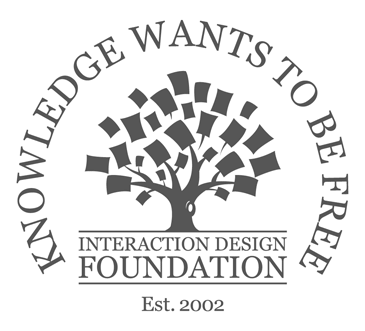 Today the Interaction Design Foundation, the IDF, has announced its new executive board. The executive board includes Don Norman; Bill Buxton, Principal Researcher at Microsoft Research; Ken Friedman, professor and former dean of the Faculty of Design at Swinburne University, Australia; Michael Arent, vice president of user experience at SAP Business Objects; Olof Schybergson, founder and CEO of Fjord, a digital service design consultancy; Jonas Lowgren
Today the Interaction Design Foundation, the IDF, has announced its new executive board. The executive board includes Don Norman; Bill Buxton, Principal Researcher at Microsoft Research; Ken Friedman, professor and former dean of the Faculty of Design at Swinburne University, Australia; Michael Arent, vice president of user experience at SAP Business Objects; Olof Schybergson, founder and CEO of Fjord, a digital service design consultancy; Jonas Lowgren, a professor of interaction design at Sweden’s Malmo University; and Dan Rosenberg, a user experience executive, consultant, and professor. All executive board members are serving gratis.
The foundation’s keystone project is Interaction-Design.org, a website that publishes free and open educational materials for students, industry leaders and individual tech designers. The present centerpiece of the IDF is the ever-expanding Encyclopedia of Human-Computer Interaction written by 100+ leading designers, Ivy League professors, CEOs, futurists and bestselling authors from across the high-tech universe. Currently, the encyclopedia numbers 35 short textbooks or chapters which students, professors and professionals can assemble in any way they want in order to make their own individualized compendium.
Don Norman has also contributed to a chapter. Three other contributing authors are Clayton Christensen, the Harvard professor praised as “brilliant” by New York Mayor Michael Bloomberg, as well as Steve Mann, known as the father of wearable computing and the inspiration for Google’s high-profile “Project Glass”, and Stu Card, a senior research fellow at Xerox PARC and leading pioneer in human-computer interaction. Other contributing authors are from MIT, Stanford University, Google, IBM, SAP, Microsoft, Cambridge University, Stockholm University, Yahoo, Carnegie Mellon University, and many more companies and universities.
The website also includes a TV station with educational videos and interviews filmed around the world by the team behind Interaction-Design.org.
The goal is nothing less than making technology more user-friendly by giving designers free educational material at the highest quality. For everyone, everywhere. From New York or New Delhi. Rich and poor.
“We’re leading a battle against frustrating and time-consuming technology — poor designs that drain our productivity, our dignity and sometimes our sanity,” says Mads Soegaard, the Founder of IDF. “Too many PCs, mobile devices, household appliances and software applications are designed with engineers in mind, not consumers. In fact, study after study shows that computers are the leading cause of lost productivity. One survey revealed that crashes, printer jams and network problems cost the average UK employee 48 minutes per day. That’s one reason why we’re reaching out to the next generation of tech designers with free, world-class educational materials.”
About Some of the Interaction-Design.org Board Members
Don Norman has been called a peerless critic in his quest to expose the flaws of ill-designed machines. He is a cognitive scientist who worked for Apple, has written half a dozen books on technology and design, and taught at UC San Diego and Northwestern University. His book, The Design of Everyday Things, published in 1986 and reissued in 2002, became a best-seller and, according to Harold Thimbleby of Middlesex University, “defined the field of human computer interaction.” He is a co-founder of the Nielsen Norman Group, a consulting and research firm specializing in user interfaces.
Bill Buxton, a Toronto-based computer scientist, designer, writer and lecturer, has spent 30 years studying the human aspects of technology. He is a principal researcher for Microsoft and taught at several universities worldwide. He pioneered multi-touch interfaces and music composition tools in the 1970s and in 2010 BusinessWeek named him among the World’s Most Influential Designers. He is the author of the 2007 book, Sketching User Experiences: Getting the Design Right and the Right Design (Interactive Technologies).
A sketch by Bill Buxton inspired the computer touch-screen’s touch. An early copy of Don Norman’s Living with Complexity, a 2010 book about how well-designed devices can tame a complex world, made its way to Al Gore’s cluttered desk.
